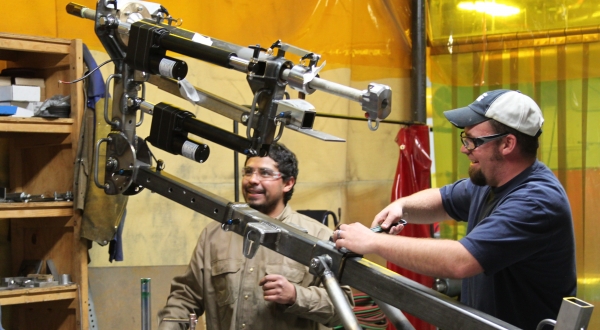
Health Links (HL): Why is the health and wellness of your employees important to you?
StoneAge, Inc. (SA): StoneAge, Inc. has been around for 35 years and has always been an employee-centric business that seeks to provide stable jobs and a great work environment for our employees. Health and wellness is of course a huge part of that. There’s of course the satisfaction of providing a good quality of life for members of our community. Additionally, from a practical business standpoint, healthy employees enhance the wellbeing of the organization as a whole. For example, Harvard University’s study of 100 peer-reviewed journal articles indicated that a properly designed worksite wellness program provides an ROI of more than 3 to 1 for health care cost reductions.
HL: What does your workplace wellness program look like?
SA: We have a number of components to our program. We have an annual onsite health fair that includes biometric assessments, hearing checks, chair massages, a lunch ‘n’ learn on a health topic and more. Our employees are on the clock for the event and the company pays for nearly all of the services we offer, as well. This has really helped to remove obstacles for employees in terms of time and accessibility. We also have an on-site fitness center with showers, lockers and a fantastic view that is free to employees and their significant others and open 24/7. An orientation to the facility is provided and employees can receive two personal training sessions for free, as well. StoneAge has bike racks for commuting employees, on-site chair massages, yoga classes and other group activities. We’ve added a wellness rewards program where employees and significant others can earn points for healthy lifestyle choices they make throughout the year. This keeps wellness a part of the conversation all year long and provides a cash incentive at the end of the year that’s based on the number of points accumulated. We also participate in fun team-building activities, such as the City of Durango’s Business Clean Commute Challenge. We’ve won our category for the last 4 years!
HL: How will you/do you know your program is successful?
SA: Participation rates are measured in several of our activities and we have very high participation. When possible, we use anonymous surveys to get employee feedback to know where we are doing well and where we need to focus our efforts in the future.
HL: What obstacles did you have to overcome to get your program started? How did you overcome them?
SA: The main obstacle was getting all of the programming up and running. Employee education and awareness was a barrier in this effort but having a passionate enthusiast helped to overcome our obstacles. The first year we offered the health fair, for example, I (Director of Human Resources) went around to each individual employee and made sure they understood the program and what was being offered and that resulted in a much higher number of participants than we would have had otherwise. We have total support from our CEO—she truly models healthy behaviors and lends ready support to our initiatives--and that has removed a lot of the obstacles that we could have encountered. Now, several years into our program, we have an employee whose responsibilities include ongoing administration of our various wellness offerings.
HL: Do you incorporate safety along with your wellness program? If so, what does this look like?
SA: Safety is something that we talk about all the time here. This year we have put it at #1 on our priorities list. We work in an industry that is very safety-focused and we want our own workplace behavior to mirror the standards imposed on our end users, who work in far more hazardous environments. Our safety and wellness programs are symbiotic, and “Safe” comes first on our list of company values—our “Bedrock”—even before “Healthy.”
HL: What tip/advice would you give to a business that is considering starting a workplace wellness program?
SA: Start where you are! Consider who works for you: ask employees what is valuable to them and what they want their program to look like. Having really passionate champions or advocates who are determined to get the program up and running is key. It’s helpful to know that you don’t have to spend a lot of money to launch a program; you can do many fun things that don’t cost a penny. For example, our Clean Commute Challenge costs the company nothing and reaps huge rewards in terms of team-building and camaraderie; walking meetings are free and can be more productive than sitting meetings. Finally, don’t overlook sources of seed money from local organizations (like Health Links!) to start your own worksite wellness program.

